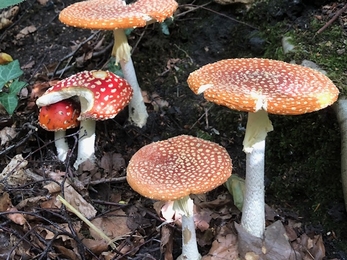I don’t know about you, but I always feel a little disappointed as the summer comes to an end.
I love long sunny days, wildflowers, bees, butterflies, and a mug of tea in the garden. This year, we have at least been blessed with a sunny September, when the autumn colours begin with lashings of sun to brighten them, softening the blow of the fading summer.
However, with autumn comes great contrast; dull grey days and mud are set off by rays of warm sunshine, crimson berries, colourful leaves and fungi, which come in a huge array of shapes, sizes, colours, and even smells. Did you know that there are fungi which smell of coconut, curry, almonds, gas, apples, aniseed, radishes and even chicken runs?! Like so many things in nature, the more you look, the more you will find. So, put on your boots, coat and woolly hats and join me in the woods, or just sit back with a cuppa and read on.










